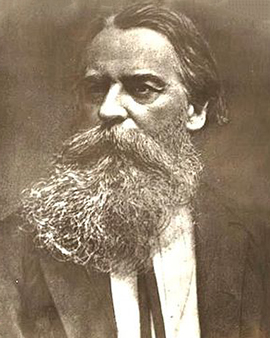


In the colorful garb of the late 19th century, a time of great discovery and adventure, stands out a figure whose name we should not forget - John Thomas Baines. Born on November 27, 1820, in picturesque King's Lynn, England, Baines was to become one of the most remarkable artists and explorers of his time. Not only the shimmering shores of Britain, but also the diverse landscapes of southern Africa and Australia, served as his inspiration and were brought to canvas through his skills. Baines' introduction to the world of art occurred in his early youth when he learned the craft from a painter. Inspired by George French Angas and William Cornwallis Harris, he set sail for South Africa aboard the Olivia at age 22. There he made his way as a landscape and portrait painter and discovered his passion for expeditions. It was these explorations that took him to what is now Namibia and Botswana, and laid the foundation for many of his later works. After two years of service to the British Army as an artist, he returned to his hometown in 1852 to share his experiences through his art and lectures.
Along the way, Baines met many other adventurers and scientists, including members of the Royal Geographical Society. His fascination with exploring the unknown world was undiminished, and in 1855 he accompanied Augustus Gregory on an expedition through northern Australia. They crossed the country to explore the Victoria River and its suitability for colonial settlement. Every moment of this journey was captured in Baines' heart and on his canvases. The highlight of his trip was the naming of Mount Baines and the Baines River in his honor. Upon his return from Australia, Baines accompanied David Livingstone on his expedition along the Zambezi River. He was one of the first Europeans to see Victoria Falls, an awe-inspiring spectacle captured in vivid color on his canvases. This moment connects in perfect harmony with our work, the production of art prints. Every art print of Baines' artwork that we produce strives to capture the same intensity and passion that Baines conveyed in his work. After a series of further expeditions, one of which took him to what is now Nxai Pan National Park, where he painted a group of baobabs that still exist today and are known as Baines Baobabs, Baines' journey ended in 1875, but his legacy lives on in his works, which can be found in the National Library of Australia, the National Archives of Zimbabwe, the National Maritime Museum in Greenwich, the Brenthurst Library in Johannesburg, and the Royal Geographical Society in London. And, of course, his legacy lives on in every high-quality fine art print we make with passion and respect for his original works.

In the colorful garb of the late 19th century, a time of great discovery and adventure, stands out a figure whose name we should not forget - John Thomas Baines. Born on November 27, 1820, in picturesque King's Lynn, England, Baines was to become one of the most remarkable artists and explorers of his time. Not only the shimmering shores of Britain, but also the diverse landscapes of southern Africa and Australia, served as his inspiration and were brought to canvas through his skills. Baines' introduction to the world of art occurred in his early youth when he learned the craft from a painter. Inspired by George French Angas and William Cornwallis Harris, he set sail for South Africa aboard the Olivia at age 22. There he made his way as a landscape and portrait painter and discovered his passion for expeditions. It was these explorations that took him to what is now Namibia and Botswana, and laid the foundation for many of his later works. After two years of service to the British Army as an artist, he returned to his hometown in 1852 to share his experiences through his art and lectures.
Along the way, Baines met many other adventurers and scientists, including members of the Royal Geographical Society. His fascination with exploring the unknown world was undiminished, and in 1855 he accompanied Augustus Gregory on an expedition through northern Australia. They crossed the country to explore the Victoria River and its suitability for colonial settlement. Every moment of this journey was captured in Baines' heart and on his canvases. The highlight of his trip was the naming of Mount Baines and the Baines River in his honor. Upon his return from Australia, Baines accompanied David Livingstone on his expedition along the Zambezi River. He was one of the first Europeans to see Victoria Falls, an awe-inspiring spectacle captured in vivid color on his canvases. This moment connects in perfect harmony with our work, the production of art prints. Every art print of Baines' artwork that we produce strives to capture the same intensity and passion that Baines conveyed in his work. After a series of further expeditions, one of which took him to what is now Nxai Pan National Park, where he painted a group of baobabs that still exist today and are known as Baines Baobabs, Baines' journey ended in 1875, but his legacy lives on in his works, which can be found in the National Library of Australia, the National Archives of Zimbabwe, the National Maritime Museum in Greenwich, the Brenthurst Library in Johannesburg, and the Royal Geographical Society in London. And, of course, his legacy lives on in every high-quality fine art print we make with passion and respect for his original works.
Page 1 / 1






